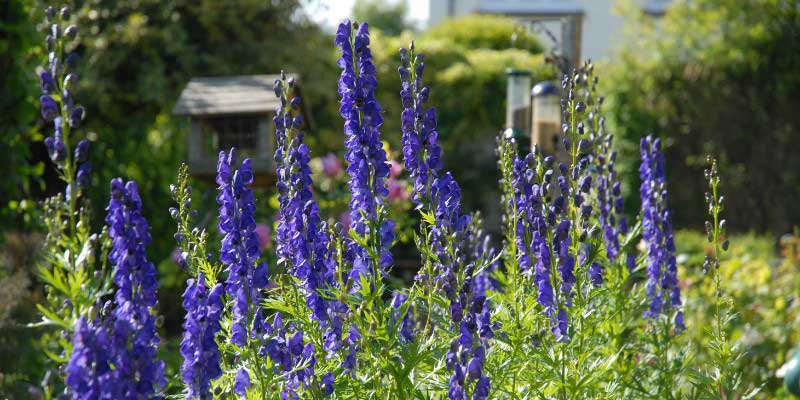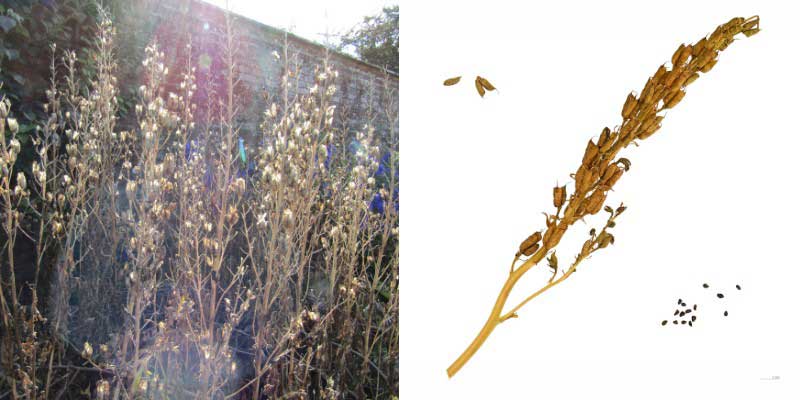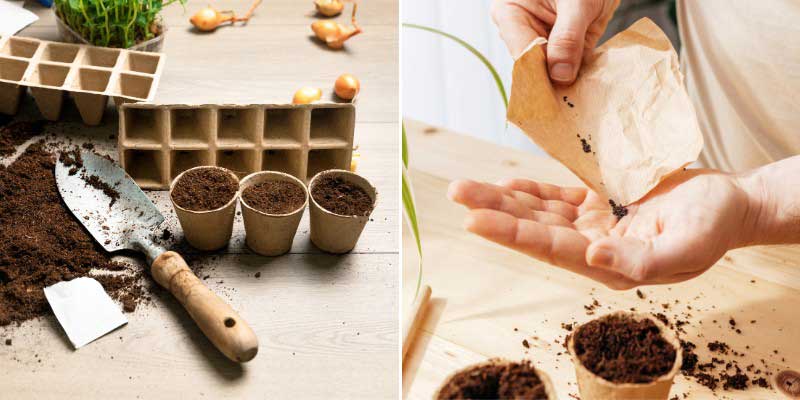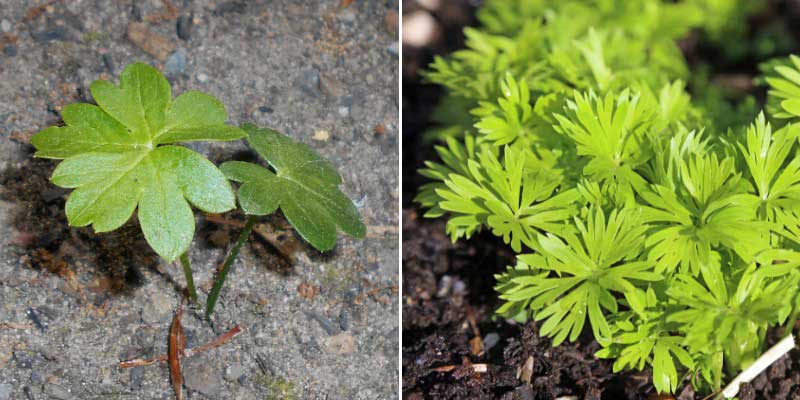Aconite or Aconitum, also known as Jupiter's Helm, is a remarkable perennial plant for its upright spikes of flowers, often bluish-purple, and its highly ornamental divided foliage. Belonging to the Ranunculaceae family, aconite thrives in cool, partially shaded areas of the garden, where it adds an elegant vertical touch in late summer and early autumn.
Propagating Aconite allows you to renew ageing clumps, faithfully reproduce the most decorative varieties, or extend its presence in different shaded areas of the garden without having to buy new young plants. Discover our advice on how to propagate it by sowing or dividing clumps!
And to learn all about its cultivation, check out our complete guide: "Aconite: Planting, Care, and Division".
Why propagate Aconite?
Propagating aconite offers several advantages:
- Renew ageing specimens: Like many perennials, aconite clumps tend to thin out over time. Division helps revitalise them.
- Reproduce your favourite varieties: We recommend dividing clumps rather than sowing, as sowing risks hybridisation, whereas division ensures new plants identical to the parent.
- Adapt the plant to your environment: By propagating specimens well-suited to your soil and microclimate, you promote better hardening of new plants.
- Save money: Rather than buying new plants, propagation allows you to expand a flowerbed at a lower cost.
- Share with other gardeners: You can give surplus plants to friends and family.

How to divide Aconite clumps?
Dividing clumps is the quickest and most reliable method for propagating aconite, especially to preserve all the ornamental qualities of the parent plant.
When to divide clumps?
Division is best done in spring, from March to April, just before new growth begins. This period encourages rapid root establishment in still-cool soil.
It can also be done in autumn, after flowering and once the foliage has died back, but establishment will be slower and winter protection will be needed.
Required materials
- A garden fork or spade: to lift the clump without damaging the roots
- Secateurs or a sharp knife: to cleanly cut the divisions
- Gardening gloves: aconite is toxic to touch
- Compost to enrich the soil before replanting the young plants from division
- A watering can
How to do it?
- Water the day before to make lifting the plant easier.
- Dig up the clump carefully, without damaging the fleshy roots.
- Remove soil from around the roots by gently shaking.
- Separate the divisions, ensuring each has enough roots.
- Replant immediately in loose, cool soil, in partial shade.
- Firm gently around each plant, then water thoroughly.
- Space plants about 30 to 40 cm apart to allow room for growth.
- Consider mulching to keep the soil cool for longer.
How to sow Aconite seeds?
Sowing is a slower method than division, and it's important to note that young plants from seed will only flower the following year. However, sowing allows you to obtain a larger number of plants without having to dig up existing ones.
When to sow Aconite?
Aconite seeds are harvested in autumn, then stored in the refrigerator to stratify (expose to cold), to break dormancy and enable germination. They should then be sown in late winter to early spring.
It's also possible to sow them in autumn and leave the pots outside to benefit from natural stratification with winter cold.

Required materials
- Aconite seeds, harvested or purchased
- A seed tray or buckets with drainage holes
- Seed compost
- A fine sieve (facultative) to refine the surface of the substrate
- A watering can with a rose or a sprayer for gentle watering
- Labels to note the sowing date and variety
- A cloche or transparent lid (facultative) to maintain humidity
How to sow Aconite?

Start by harvesting the seeds when ripe, as the capsules begin to open. Then place them in the refrigerator during winter for at least 4 to 6 weeks to stratify them.
- In late winter, fill the pots with a fine, well-draining substrate.
- Firm lightly without compacting the compost too much.
- Place the seeds on the surface, without burying them. Aconite seeds need light to germinate.
- Moisten gently with a watering can or sprayer.
- Place the sowings in a cold frame, in a bright location but out of direct sunlight.
- Monitor germination from March-April. Germination can be slow (several weeks to months).
- Transplant into individual buckets when the seedlings develop 2 to 3 true leaves.

How to care for Aconite after propagation?
Young aconite plants require some simple care to establish well. Watering should be regular but moderate: the soil should remain cool, without excess water, as aconite dislikes waterlogging. Effective drainage is essential, whether in pots or in the ground.
Plant in partial shade, in rich, deep, humus-bearing soil. A spring compost application is enough to nourish the plant without encouraging excessive foliage. Mulching can help retain moisture and suppress weeds.
Protect young shoots from slugs and snails, especially in spring. Signs of success include new shoots and steady growth. If yellowing or stagnation occurs, check drainage and exposure.
Seed-grown plants can be transplanted after one year. Remember to divide clumps every 4 to 5 years to maintain their vigour and flowering. Proper care will ensure your aconites thrive in the garden for years to come.
































Comments